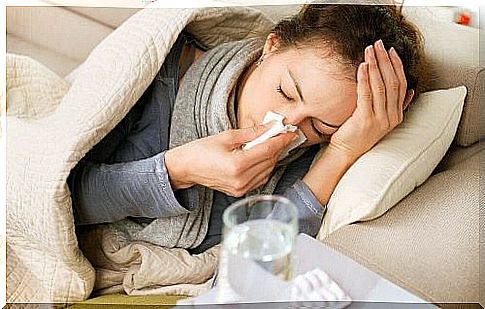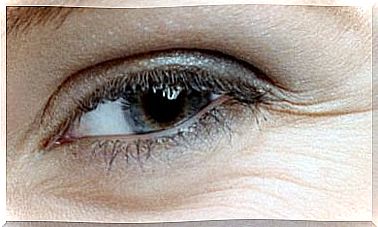Cold – 10 Steps To Fight It

The common cold is a disease that strikes mainly when your immune system is weakened for various reasons. It is generally a viral infection that negatively affects the health of your upper respiratory tract (nose and throat).
In our today’s article, we have included a description of 10 steps that will help you effectively fight a harmless, but extremely troublesome disease, which is a cold .
Colds are common whenever it is cool outside. Nevertheless, it may appear at any time of the year. And all because we know very well that there are many types of viruses that cause this disease.
For this reason, it is important to learn how to successfully combat this disease at home. This involves, among other things, the implementation of several healthy habits. They strengthen the health and condition of your respiratory system without the need to take drugs that are products of the pharmaceutical industry.
In our article for you today, we’ll discuss some of the causes of the common cold. We will also show you 10 things you can do to recover from this unpleasant disease without much effort.
Common causes that trigger a cold
There are many different types of viruses in the world that cause colds. However, the overwhelming majority of cases of this disease are caused by rhinoviruses.
These microorganisms enter our body through the mouth, eyes or nose. They can be passed on to other people through contact with saliva droplets in the air. For example, when an infected person coughs, sneezes or just talks while facing us.

To a lesser degree, such viruses can also spread through shared items. These include, but are not limited to, dishes, towels and toys. It is also possible to pass them on to another person if, after any exposure to viruses, you then touch your eyes or mouth with your hand.
People who are most at risk of catching a cold, as well as the most common risk factors, include, but are not limited to:
- Children under 6, especially those who attend kindergarten regularly
- People with a weak immune system
- Cool seasons such as winter or fall
- Smoking large amounts of tobacco
- Direct or even indirect contact with an infected person
Symptoms typical of the classic cold
Common cold symptoms usually appear one to three days after exposure to the virus. They can show up in different ways in each person, depending on how their immune system responds.
The most common symptoms of the disease include:
- Stuffed nose
- Sore throat
- Dry cough or phlegm in the airways
- A feeling of heaviness in the chest
- Body aches and headaches
- Sneezing
- General discomfort and a feeling of “broken”
10 steps to fight colds
There are many over-the-counter medications on the market that can help alleviate various symptoms of the common cold. However, it is good to know how to fight this disease in a natural way.
1. Make sure you get adequate rest
It is extremely important in this disease to have a good rest. This will allow you to avoid further complications caused by a cold. Sufficiently or sufficient amount of rest is a key issue in regaining strength after a cold.

It all comes from the fact that your body needs to collect a lot of energy to successfully fight the virus of this disease. Just remember that your body is fighting a difficult virus all the time and must therefore constantly conserve energy.
2. Quit smoking cigarettes
Smoking cigarettes can lead to serious health complications in people who catch a cold. Consequently, if you smoke, it is important to refrain from doing so while you are ill. This will allow you to heal much faster.
3. Eat well and healthily
4. Remember to dress warmly and avoid freezing.
Cold weather usually makes cold symptoms worse. So try to keep warm and dress well until you feel better.
5. Drink plenty of fluids
Increasing the amount of water and healthy drinks you drink each day is key to preventing dehydration. Especially when you have a really serious viral infection. In the case of the classic cold, try to drink at least two liters of fluid a day.
6. Eat citrus fruits in large quantities
Eating a lot of citrus fruits gives your body a lot of vitamin C, which is very much needed at this point.
This valuable nutrient strengthens your immune system and at the same time improves your body’s response to viruses that cause colds.
7. Remember to open the nose
If your nose is very blocked, just try to open it. You can use, for example, salted water for this purpose, if the usual procedure is not enough for you.

It is a simple, completely painless process that will help you remove mucus from your airways very effectively.
8. Do not use antibiotics under any circumstances
Be careful! Colds cannot be cured with antibiotics. This disease is caused by viruses. Antibiotics are used to treat bacterial infections, which means that if you have a cold, they will simply be completely ineffective.
9. Drink herbal infusions
There are literally dozens of teas and infusions made from plants, spices and fruits on the market that can soothe the symptoms of a cold.
Drinking them several times a day reduces congestion in the airways and headaches, among other things.
10. Avoid sudden changes in temperature
One of the reasons why you should completely rest when you have a cold is to avoid sudden changes in temperature. Even if they do not always have a significant impact on your disease, they can prolong the symptoms that bother you.

Are you experiencing the first symptoms of a cold? In this case, try to follow all of the recommendations we have listed above. It will allow you to speed up your recovery. However, if you have a fever or difficulty breathing, consult your doctor.
And while a cold can rarely lead to other complications, some of them can lead to ear infections, asthma attacks, or acute sinusitis.









